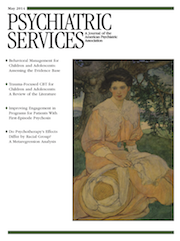Disparities in the Use and Quality of Alcohol Treatment Services and Some Proposed Solutions to Narrow the Gap
Abstract
Objectives
This study assessed racial-ethnic disparities in access to high-quality treatment for at-risk drinking and alcohol abuse in the United States and simulated strategies to narrow the gap.
Methods
Longitudinal data collected in 2001–2002 and 2004–2005 from the National Epidemiologic Survey on Alcohol and Related Conditions were analyzed to examine racial-ethnic disparities in receipt of alcohol interventions that were provided in primary care and specialty treatment settings and that met published clinical guidelines. The sample consisted of 9,116 respondents who met criteria for at-risk drinking or alcohol abuse in 2001–2002. Simulation analyses projected how disparities in treatment services utilization might change if clinical guidelines promoted access to care in more varied health and human service settings.
Results
Compared with whites, members of racial-ethnic minority groups had less than two-thirds the odds of receiving an alcohol intervention over the roughly four-year study period (odds ratio [OR]=.62, p<.05). This disparity increased after adjustment for socioeconomic confounders and frequency of heavy drinking (adjusted OR=.47, p=.003). The most pronounced disparities were between whites and U.S.-born and foreign-born Hispanics. Simulation analyses suggested that these disparities could be partially mitigated by extending care into nonmedical service venues.
Conclusions
Current efforts to extend evidence-based alcohol interventions into medical settings address an important need but are likely to increase racial-ethnic disparities in access to high-quality treatment. Partial solutions may be found in expanding the range and quality of alcohol-related services provided in alternative delivery sites, including faith-based and social service institutions.



